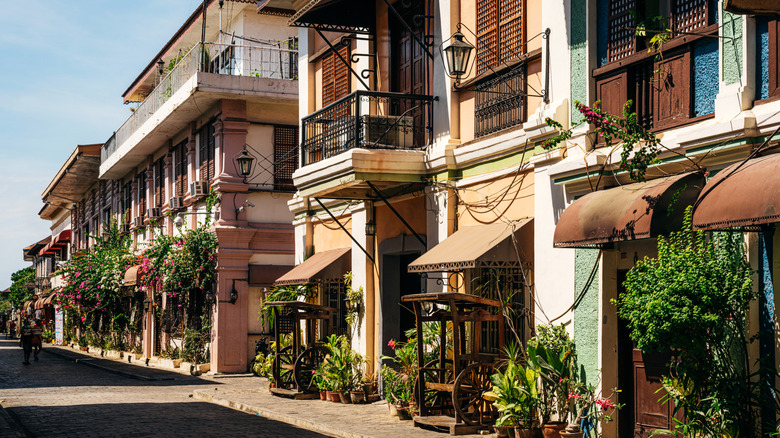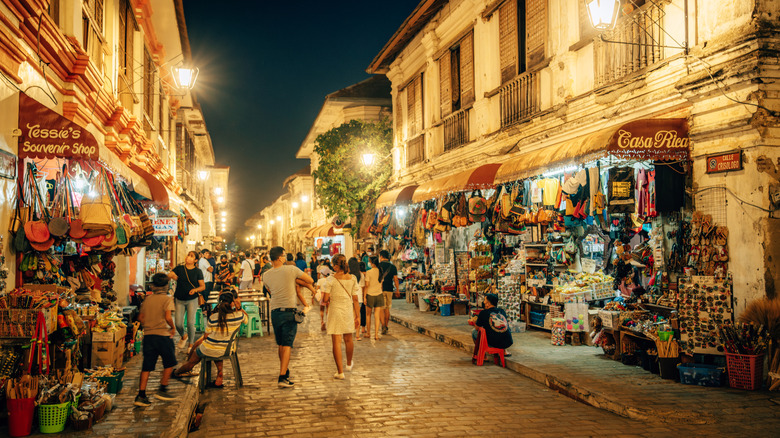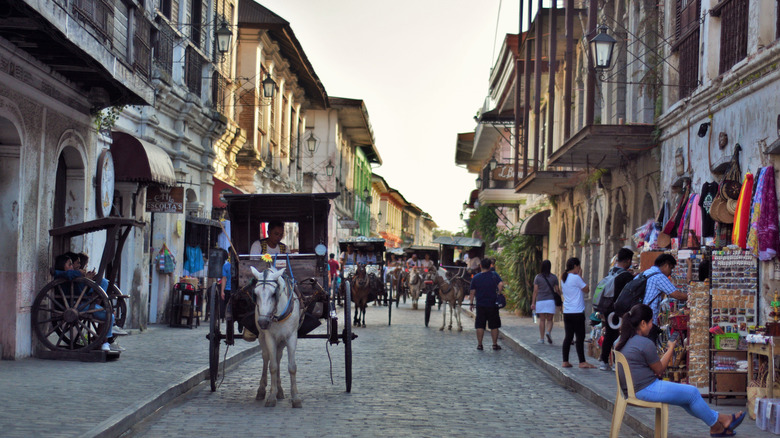In the Philippines, on Luzon island’s western edge, is a beautiful coastal respite named Vigan City that offers a scene that transports you to what feels like the European Renaissance. The city has charming historic cobblestone lanes, known locally as “sett pavements,” and the notable “báhay na bató,” which are stone houses from the past. The buildings display a mix of construction approaches, marrying native Philippine and East Asian architectural forms with European colonial designs. Materials like terracotta, capiz shells for the large window openings, local hardwoods, and limestone were used, adding to the city’s gorgeous appearance and the way light shines into the homes.
The city’s organization follows a grid street pattern, another nod to Spanish colonial structures that can be seen in its streets and central plazas like Plaza Salcedo. This planned structure, alongside Vigan’s standing as one of Asia’s most intact Spanish colonial towns, gives it that old-timey European vibe mixed with a stunning coastal Philippines paradise. You can walk (carefully) down Calle Crisologo, and hear horses pulling a carriage (also known as a kalesa), or pop into museums like Crisologo Museum, Syquia Mansion, or the Vigan Conservation Complex that are built within historically remarkable locations. Vigan’s architecture is also a blend of designs that thoughtfully brings in Chinese influences and strong local Ilocano building traditions.
Cafes, eateries, and restaurants you’ll want to visit in the city of Vigan
Vigan City has a plethora of eating spots, from sit-downs inside beautifully maintained historic houses to local eateries. Many are celebrated for their genuine Ilocano fare. You can pop into Kusina Felicitas to try its crispy bagnet, which is a deep-fried pork belly, or an earthy plate of vegetable lumpia. Café Leona is another spot where you can order pinakbet, which is a rich vegetable stew flavored with shrimp paste, and the city’s signature sausage called Vigan Longganisa. Café Uno is a great, rustic coffee shop. Then you can head over to Bistro Amarillo to order some breakfast foods or Ukoy (vegetable and shrimp fritters).
If you’re looking for more of a budget-friendly option or truly local choice, neighborhood carinderias have silog (breakfast dishes) that usually come with rice, eggs, and a choice of meat or protein. Vigan also offers international fare at Japanese and Korean BBQ spots, and restaurants specializing in seafood from the coast. Some places create fusion dishes, mixing regional ingredients with worldwide recipes that can be enjoyed in European-period settings, particularly along Calle Crisologo. The Ilocos region also lays claim to basi, a traditional sugarcane wine. This wine is made from sugarcane juice and typically has an alcohol content of 10% to 16%. It has a pale reddish hue and is sweet with a slight tang, complemented by earthy notes from the addition of samak tree bark. You can find basi in local markets, or you can buy it in stores throughout the city.




